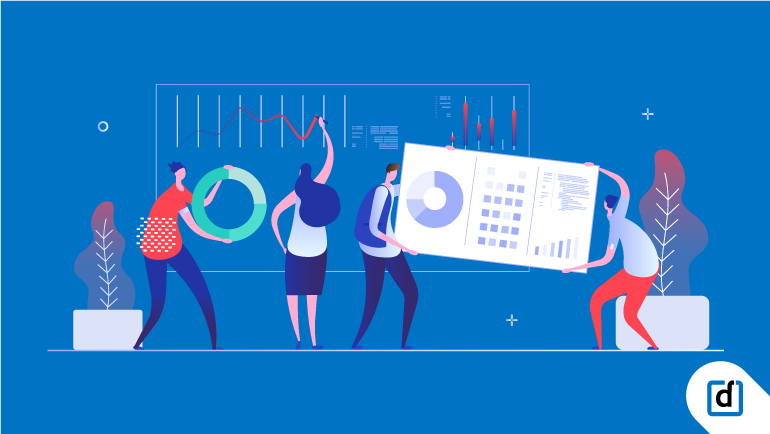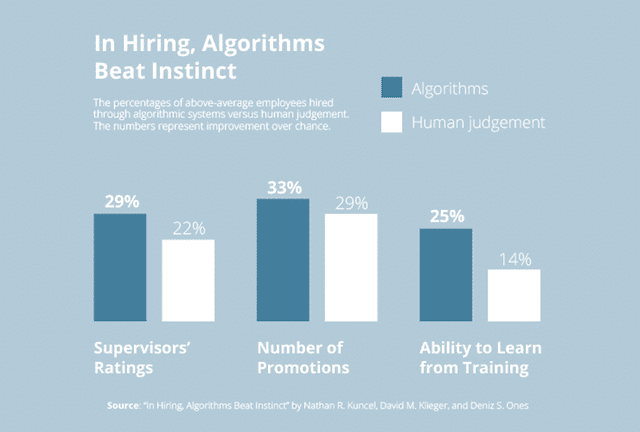
People analytics is transforming the workforce in many business organisations. Human resources, which form a vital part of an organisation, are now data-driven. People analytics have played an essential role in this transformation.
HR analytics is taking the forefront as businesses tackle problems based on the metrics and analysis provided. Society for Human Resource Management (SHRM) believes the criteria for judging business acumen will be its HR and organisational metrics.
People analytics adds value to an organisation by tackling issues relating to data quality, integrity, and integration. Using analytics in HR has taken place in the shadows. Now, businesses realise the importance of using it strategically to align it with business goals like increased production, increased revenue, and lower costs. According to Bersin’s research, only 7% of organisations feel the need to use analytics in HR, while 78% voted for the importance of people analytics. Lack of analytics in HR shows untapped opportunities.
Benefits and Challenges of People Analytics
People analytics have tremendous benefits for a business organisation and to its HR department. They are:
- Increased efficiency of the organisation
- Improved talent recruitment process for the HR department due to analytics
- Assessment of job qualifications and potential of the candidate.
- Reduction in manual hiring because of data digitisation
- No biased decisions, leading to quality hiring of HR professionals
- Collection of hiring data that are in correlation with business goal
- Decrease of attrition rates by 35%, and increase in performance by 20%
This infographic shows how using algorithms beat instincts.

Weighing the pros and cons of using HR analytics, business organisations also realise its need because of changing trends. People analytics are transforming HR into a strategic partner. Here is a step-by-step guide to using analytics in HR:
STEP 1: Encourage data-based decision-making cultures
Encouraging a data-based decision-making culture in your organisation will help prioritise data-driven insights; rather than those based on opinion. Creating a culture surrounded by collecting data, analysing, and test applications will help tolerate mistakes, encourage continual learning and innovation at the workplace.
STEP 2: Guide through the unknown questions and uncertainties
Identify the pain points of your company that are not allowing it to grow towards success. Once identified, you can use the data to guide you through the unknown questions and uncertainties. Set specific and reasonable goals for your company and develop a hypothesis for the questions. Collect the relevant data as per the hypothesis and strengthen your weaknesses.
STEP 3: Collecting and managing data
Collect all the data based on the question you wish to address. Diversify analytical tools, metrics, and key performance indicators (KPI) to discover solutions for the problem you are addressing. Using accurate data management tools will allow you to go back to past data records. Based on past data records, you can reach better solutions for future problems, which will help secure success faster.
STEP 4: Interpreting results and taking action
People analytics give you a clear picture of the data-based results and what action to take. Interpret the data and see what it is trying to tell you. Implement the plans to see improved results based on the data. It is the adoption of people analytics in your workplace.
STEP 5: Collecting enough and efficient research matter
By collecting enough data and efficiently putting it into action will show that the method used works effectively.
STEP 6: Implementing continuous feedback channels
Feedback plays an essential role in the success of any organisation. Implementing continual feedback channels will help drive your organisation towards new goals and objectives. The conversation of analysing people, collecting data, and measuring KPIs are essential in the success of your organisation. Hence, feedback channels are fundamental.
STEP 7: Check for compliance
Legal compliances form the base of any decision made within an organisation. Implementation of analytics in HR means the constant addition and reduction of skill set in an organisation, while responsibilities on the existing workforce increase. Amidst all this, an organisation must check for legal compliances at all levels within the organisation.
STEP 8: Setting realistic expectations
Working with humans is a challenge. Different variances like personalities, abilities, emotions, intangibles play an essential role when setting expectations from humans. Thus, an organisation must set realistic expectations, those which their workforce can achieve and workaround.
Darwinbox- The Most Preferred HCM Solution
Darwinbox is a new age Human Capital Management (HCM) solution. It enables organisations to unleash the true potential of their workforce. It has features like employee management, performance management, detailed MIS and analytics reports, screening for candidates, centralised employee database, and attendance and leave management. These features have made it the ideal software for a company looking to implement analytics in HR.
Darwinbox uses artificial intelligence-based analytics to instill digital efficiency in organisations. Its advanced people analytics module helps in the easy streamlining of data. Compensation analytics helps in the easy slicing and dicing of data structures to make improved business decisions. It bases metrics on various parameters like hierarchy, age group, and more. Attrition and people analytics help categorise data linked to the CORE. An organisation can understand the process of attrition better. It allows stakeholders to access data relating to people analytics. People analytics help you make data exclusive to only a few and flexible visibility.
Awarded as Asia’s most preferred HCM solution by Gartner, it caters to over 500+ enterprises, and over 1 million employees use this software.
Conclusion
The future of people analytics is changing. It has a strong potential for improving HR functions. Employee performance has now become a factor in assessing the overall value of a company. Analytics in HR will give specialists tools and better reach to potential candidates. Log on to our website and let the magic unfold.



Speak Your Mind